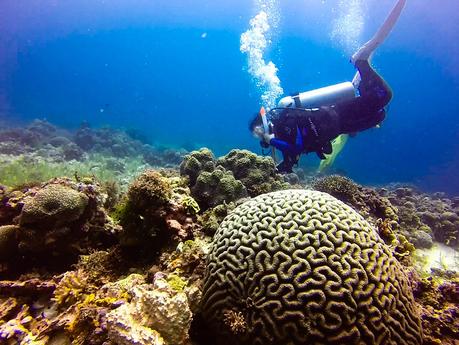
Are you familiar with the famous photo The Pale Blue Dot? It is a grainy image of the Earth 6 billion miles away, taken by the Voyager 1 space probe. In this photo, our planet, less than a size of a pixel, is suspended on a band of sunbeam. It may not seem much, but this is a very powerful photo.
It shows just how tiny Earth is against the vast cosmos. Yet, it is the only planet we know that harbors life. This underscores the preciousness of our beloved planet and every life in it. We are duty-bound to help protect it; that’s why we join cleanups like Dive Against Debris by Project AWARE.
After a hot and delicious buffet breakfast at Allegro Restaurant in Bluewater Maribago, we met the rest of the Project BLUE team. We have done a lot of reef cleanup dives with the team, and just recently, we have become official Project BLUE members! Being a part of a dedicated group that advocates the protection and preservation of the ocean is such a big honor.
We loaded our equipment, food, and ourselves into a boat. Before the dive, we need to register and attend a briefing at the neighboring Crimson Resort and Spa Mactan, the venue and host of the Dive Against Debris event.
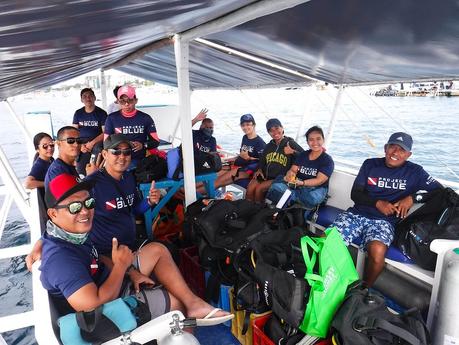
A quarter of an hour later, we docked at the resort, registered ourselves, and listened to some introductory words and a safety briefing. Lots of divers, both independent and associated with groups, turned out at the event. Whatever differences they may have, everyone is united in taking care of the environment.
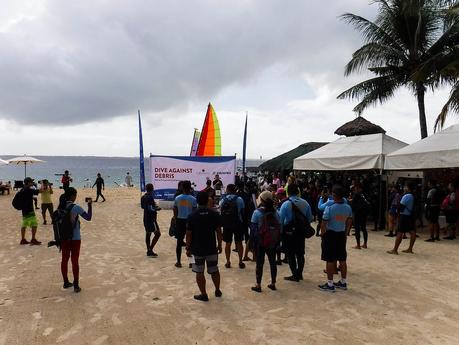
All set and geared up! Divers entered the house reef via shore entry and prepared for the cleanup. A TV crew assigned to cover the event boarded our boat and went along with us to our assigned area, a mile off Crimson Spa.
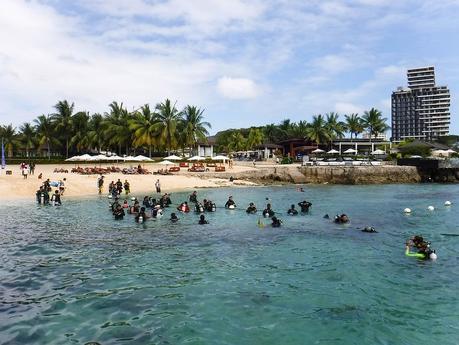
After gearing up, we entered the water and submerged. Wasting no time at all, our squad of Project Blue environmental soldiers started scouring the reef for trash that humans have carelessly left behind.
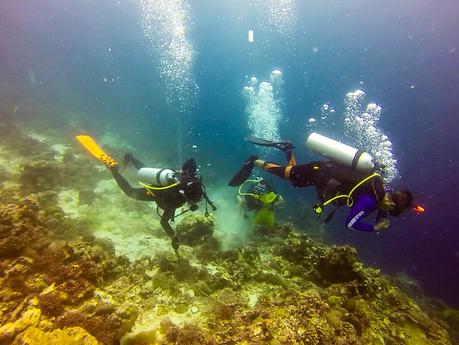
When scuba diving, we can’t just go up to the water surface’s at will; otherwise, there will be dire consequences—specifically decompression sickness. So, in our cleanup drives such as this, we brought old sacks of rice where we can put in the rubbish we picked up from the ocean floor. As the cleanup comes to an end, these garbage-filled rice sacks are hauled up the boat.
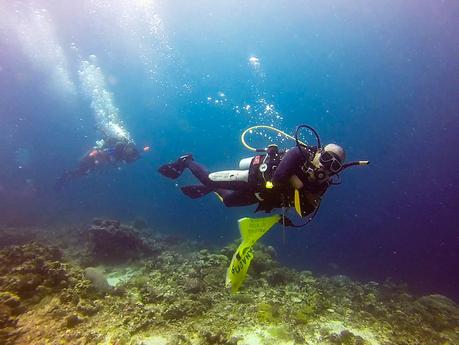
A school of small fish inspected our work as we swam and cleaned their homes. They may not understand us what we’re doing, but at least, when they return to their homes, they’ll find it more pristine, safer, and better than before.
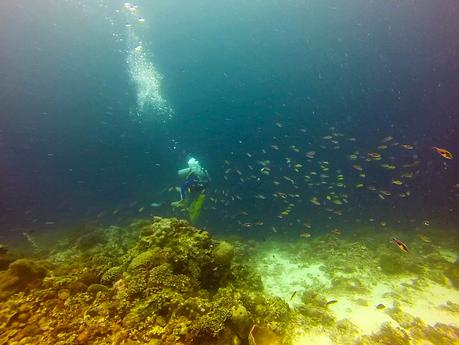
A clean sea is a healthy sea. And a healthy see is crucial not just to the planet’s biosphere but also mankind’s society. Healthy seas provide millions of people all around the world food. With a flourishing marine population, an equally flourishing fishing industry can boost up the local/national economy.
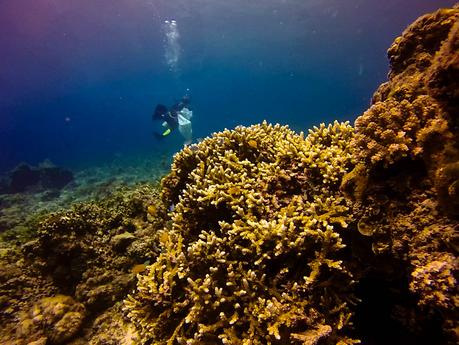
You may not think of twice about throwing your used paper plate, cigarette butts, or plastic bag into the sea. But what you don’t know is that those seemingly “innocent” trash are deadly bombs and biological weapons to marine creatures. Paper plates can cover entrances to their homes, for example. Non-biodegradable cigarette filters—and the toxins trapped in it—can be lethal to delicate marine creatures. Sea turtles, dolphins, and whales can ingest those plastic bags, which can cause starvation—and their eventual death.
Here’s a very alarming news: plastic waste is found even at the bottom of the Mariana Trench, the deepest point in our planet’s oceans.
Every time we go island hopping, swimming, snorkeling, scuba diving, or traveling by sea, we have to remember we are only visitors. So let’s respect their homes. Just think: do you like visitors and strangers carelessly throwing trash in your own home?
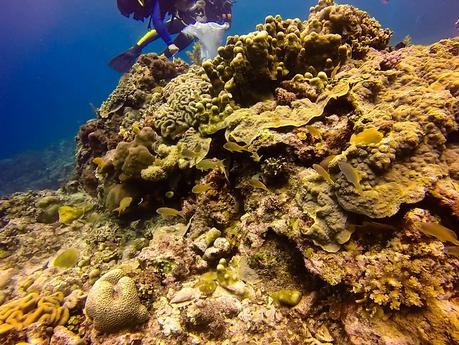
One of our Project BLUE team mates rescued this small fish from certain death. A rusty abandoned fishhook snagged it by its mouth. He took great care in removing the fish hook so the little fellow can swim to freedom and have another chance at life.
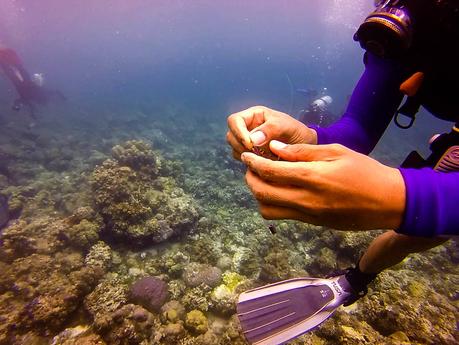
Cleaning a reef is not easy. We had to observe neutral buoyancy at all times, taking care not to make contact on the seabed. And when getting trash off the seabed, it has to be done with care. Encrusted barnacles, ragged edges of broken bottles, and razor-sharp edges of rusty cans can easily cut our hands.
Most importantly, there’s also a matter of safety. We have to be in range of our dive buddies, be careful not to rise to the surface quickly, look out for watercraft passing above us, be aware of our depth and air supply, etc. Scuba diving is fun, but you need to know and observe the rules.
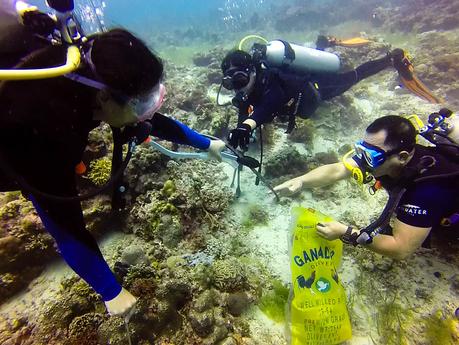
We also had to watch out for potentially dangerous animals. These animals may not understand what we’re doing, and they may view us as a threat. In the wild, threatened animals may attack, and their attacks are usually injurious or even deadly.
I had to wait for quite some time to get this soda can because of a sea krait resting beside it. Sea kraits, although shy and non-aggressive, are some of the most venomous snakes in the world. I did not take chances. I waited from a safe distance until the snake went into a hole, and picked up the can using my aluminum probe.
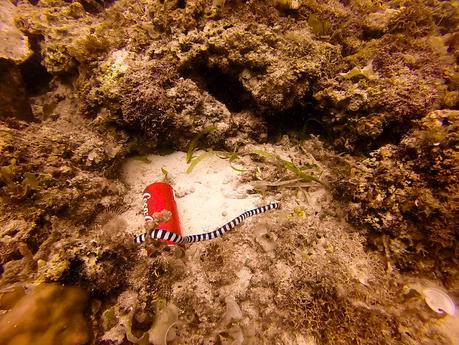
Kraits aren’t the only animals that can harm you if you’re not careful. While going back to the boat, we chanced upon this large, transparent jellyfish. We stayed well away from its long tentacles. One brush with those tentacles, and we’ll suffer incredibly painful stings. If this is a box jellyfish, a brush would be fatal.
This is another reason why reef cleanups are not easy. So we do hope that you realize that every time you throw garbage into the ocean, you may be risking the life of an environmental protector.
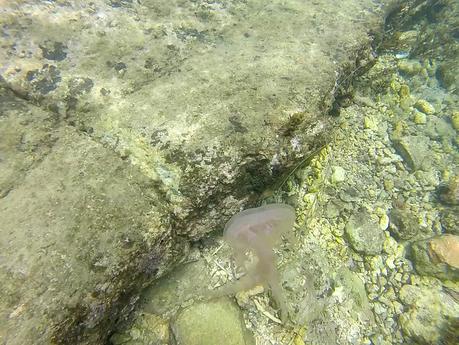
After an hour, our cleanup was almost done. We moved to shallow water for a 5-minute safety stop and to gather our rice sacks.
Old concrete blocks and pipes all give marine critters and swimmers pretty interesting spots to crawl, hide, and swim.
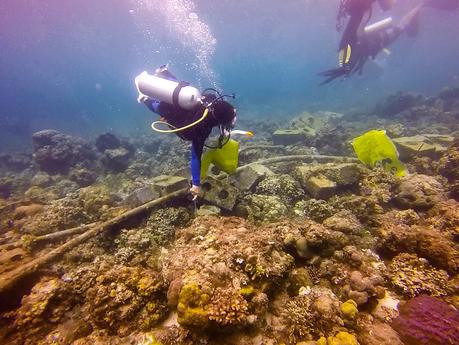
Mission accomplished! As we climbed back to our boat, we were delighted that our boatmen prepared a sumptuous lunch for us. We feasted on some grilled fish, kinilaw (Cebuano ceviche), and liempo (slow-roasted pork belly). Yummy!
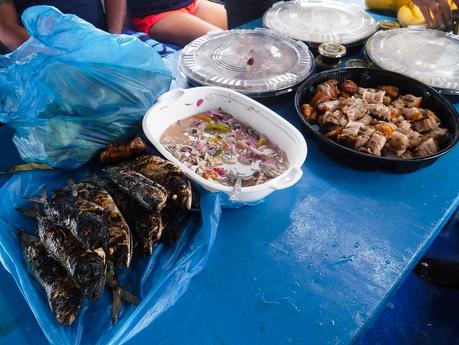
We headed back to Crimson Resort and Spa to have our sacks weighed and inventoried. And what a surprise, we had a second lunch at the hotel! What a great reward for cleaning a reef!

We would like to end this with an eye-opening insight. On October 1994, the late astronomer Carl Sagan gave a public lecture at the Cornell University. During his lecture, he presented the image of The Pale Blue Dot to the audience. Sagan then delivered one of the most powerful and meaningful insights in history:
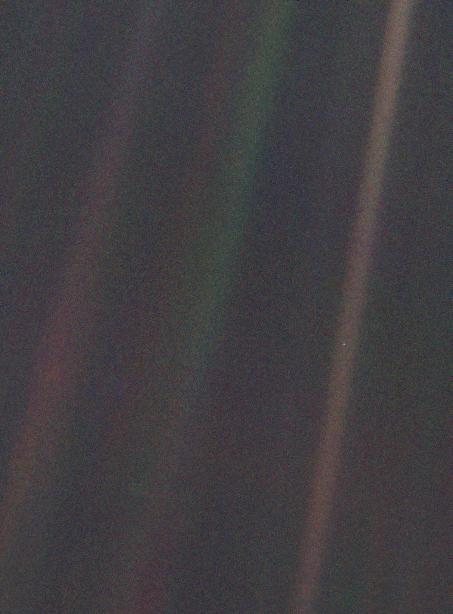
We succeeded in taking that picture from deep space, and, if you look at it, you see a dot. Look again at that dot. That’s here. That’s home. That’s us. On it everyone you love, everyone you know, everyone you ever heard of, every human being who ever was, lived out their lives. The aggregate of our joy and suffering, thousands of confident religions, ideologies, and economic doctrines, every hunter and forager, every hero and coward, every creator and destroyer of civilization, every king and peasant, every young couple in love, every mother and father, hopeful child, inventor and explorer, every teacher of morals, every corrupt politician, every “superstar,” every “supreme leader,” every saint and sinner in the history of our species lived there–on a mote of dust suspended in a sunbeam.
The Earth is a very small stage in a vast cosmic arena. Think of the rivers of blood spilled by all those generals and emperors so that, in glory and triumph, they could become the momentary masters of a fraction of a dot. Think of the endless cruelties visited by the inhabitants of one corner of this pixel on the scarcely distinguishable inhabitants of some other corner, how frequent their misunderstandings, how eager they are to kill one another, how fervent their hatreds.
Our posturings, our imagined self-importance, the delusion that we have some privileged position in the Universe, are challenged by this point of pale light. Our planet is a lonely speck in the great enveloping cosmic dark. In our obscurity, in all this vastness, there is no hint that help will come from elsewhere to save us from ourselves.
The Earth is the only world known so far to harbor life. There is nowhere else, at least in the near future, to which our species could migrate. Visit, yes. Settle, not yet. Like it or not, for the moment the Earth is where we make our stand.
It has been said that astronomy is a humbling and character-building experience. There is perhaps no better demonstration of the folly of human conceits than this distant image of our tiny world. To me, it underscores our responsibility to deal more kindly with one another, and to preserve and cherish the pale blue dot, the only home we’ve ever known.

